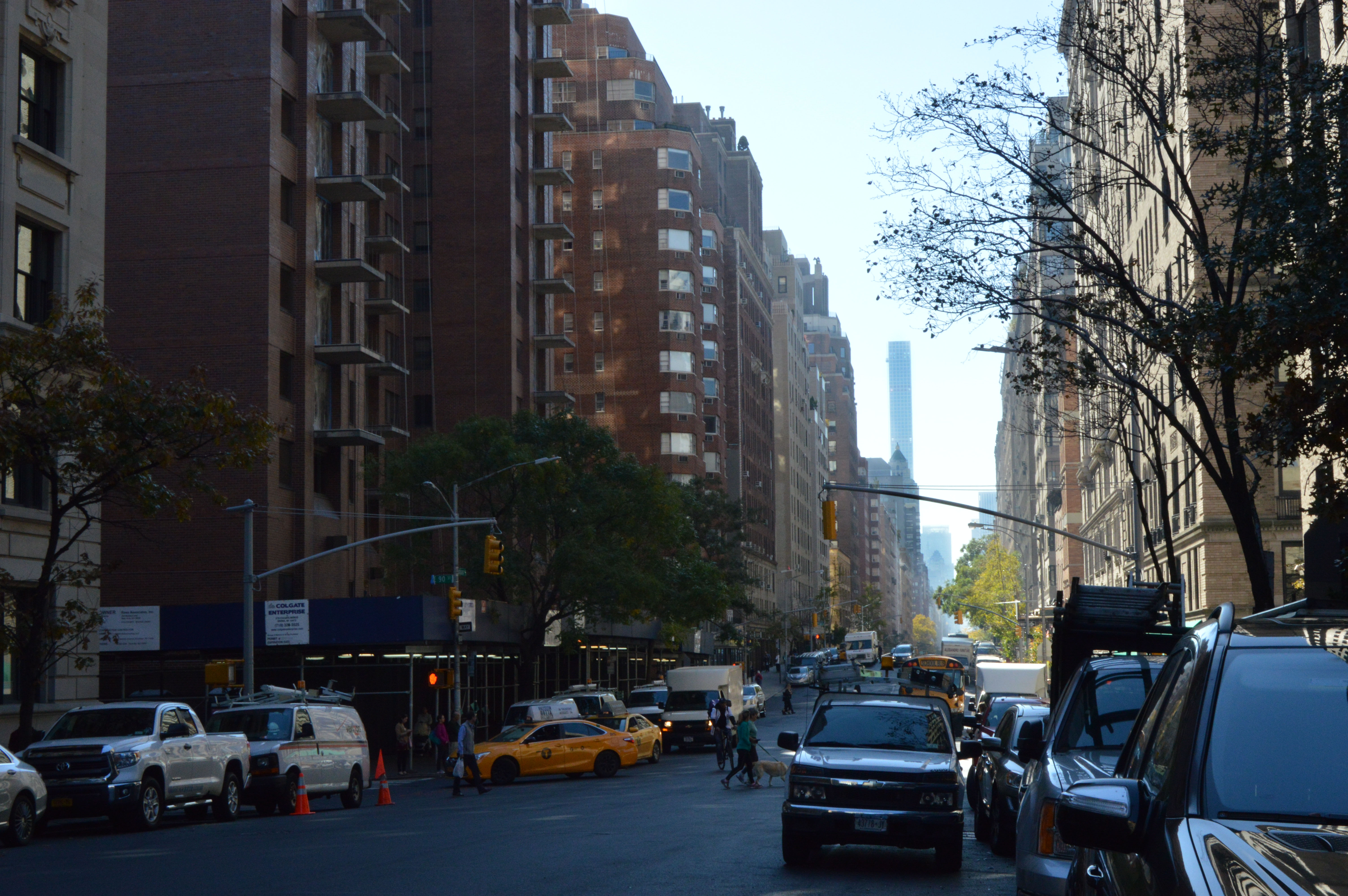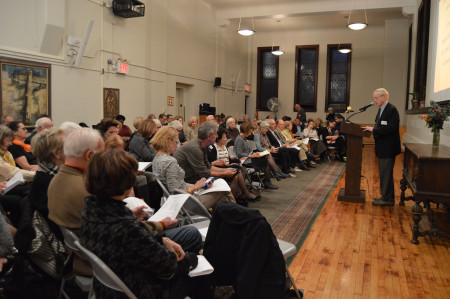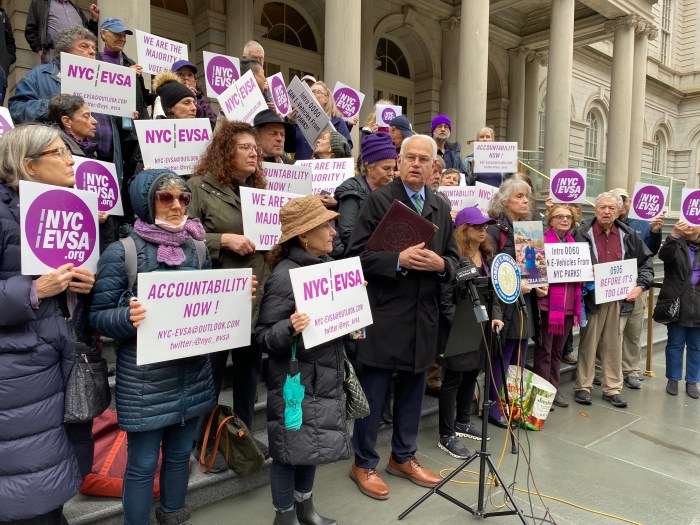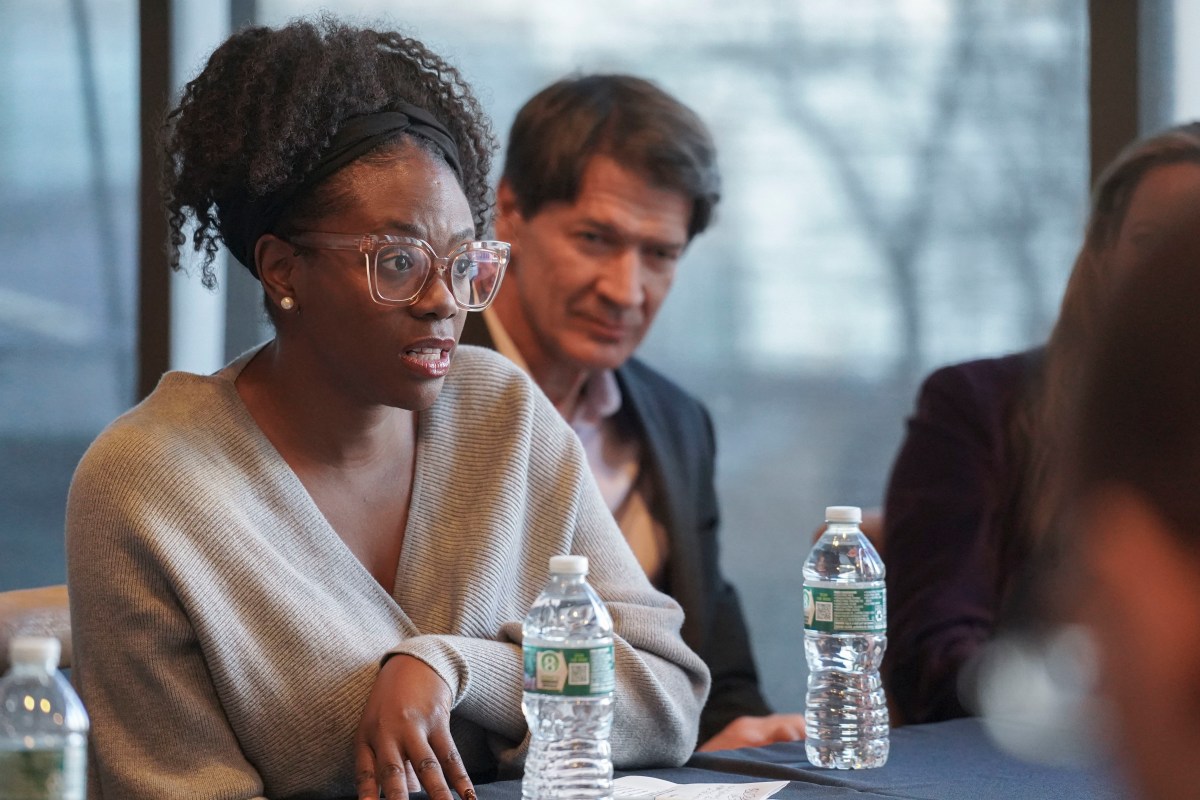
BY JACKSON CHEN | Residential concerns about quality of life, aesthetic values, and setting bad real estate development precedents are looming in the shadows of the super tall skyscrapers now sprouting up in Midtown.
In neighborhoods throughout the Upper East Side, one particular building has caught the ire of many residents. Dubbed the pencil building for its skinniness and uniformity, the residential complex at 432 Park Avenue is currently the second tallest building in the city — behind One World Trade Center. If measured by roof height, the 432 Park Avenue building has the formerly-dubbed Freedom Tower beat by 28 feet.
As residents stroll the streets and avenues that make up Carnegie Hill, the 432 Park Avenue building is an unwelcome sight for most. Set against the up-and-down street wall of the neighborhood, the pencil building clearly stands out, even from a distance of roughly 30 blocks south in the heart of Midtown.
“432 Park Avenue, that one is an atrocious eyesore for anybody who looks south down Park Avenue,” said Les Marshak, a longtime Carnegie Hill resident. “This [building] destroys the whole sightline.”
Beyond critical quips from local residents, a neighborhood association has spearheaded discussion about the super tower and potential followers by making the issue the main agenda item during its recent annual meeting.
On October 20, Carnegie Hill Neighbors largely devoted its yearly gathering to an informal discussion about the controversial pencil building and other high rises.
“We were concerned about the shadow this building would cast on Central Park; that was the beginning of our direct involvement,” said Lo van der Valk, president of the Carnegie Hill Neighbors. “Proliferation of the super tall buildings can create a wall, or at least a shadow wall.”
Many members of the neighborhood association said the shadows cast and loss of sunlight is a quality of life issue they don’t have much say in.
“I can’t understand how we don’t find out about it until it’s too late,” Marshak said. “I’d like to see some more communication from the city to inform the public, not only in the immediate neighborhood, but those who are within view of the buildings.”
Adrienne Schlossberg, a Yorkville resident, said skyscrapers like 432 Park can take away the charm and aesthetic of neighborhoods far afield.
“I think it strips away any personality from the area,” she said. “You look and you don’t see any beauty in this thing.”
According to van der Valk, Carnegie Hill residents have witnessed the trend of skyscrapers taking over Third Avenue, now East 57th Street — the cross street of 432 Park Avenue — and are wary of future development in areas even closer to their homes.
“I think before it was never a threat because technology didn’t allow you to go that high,” van der Valk said. “Now, the only thing that limits it is planes flying overhead, by the [Federal Aviation Authority].”

For Margaret Newman, former executive director of the Municipal Art Society of New York who was invited to lead the evening’s discussion, the shadows cast by the buildings are only the tip of the iceberg. She said that the majority of the discussions she’s been involved in have revolved around whether their developers would make positive contributions to transit, creating open public spaces, or enhancing local parks as part of constructing skyscrapers.
“If they go up as-of-right, which most of these buildings in Midtown are,” Newman said, referring to the zoning term under which developers can bypass discretionary review by city agencies, “they amass their zoning rights to put up taller towers on their site. Once they do that, there’s no accountability and the only recourse the city has at that point is some taxes that will come in.”
Newman, who now works as the head of More Urban, a consulting firm, said she’s been advocating for reform regarding the accountability of developers who are seeking to build towers that pierce the sky.
As for the aesthetic appeal of the 432 Park Avenue building, Newman said that while there’s something compelling about the towering residential complex’s minimalism, it is way out of scale. She noted, however, that could change if the city’s overall skyscape changes over the next 20 years and becomes more in tune with the pencil building.
“It’s kind of like a very tall elegant background building,” Newman said. “It may be, in fact, 20 years from now, the whole level of Manhattan goes up and it won’t stand out so much.”
That offers no consolation to Marshak, who said he’s unable to enjoy the New York City skyline he grew up admiring.
“I was driving into the city from the LIE, looking at the Manhattan skyline,” he complained. “I could barely find the Chrysler and the Empire State Buildings. The two buildings were dwarfed by every shape and style you can imagine.” ν
Contact Jackson Chen at JChen@cnglocal.com.





































